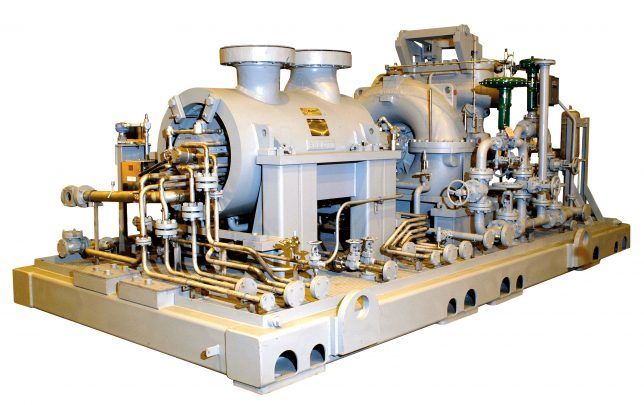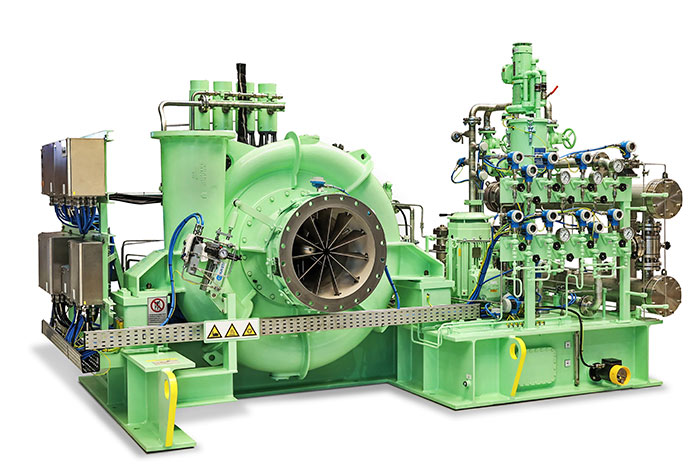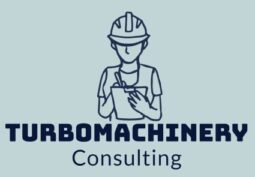OBSOLESCENCE vs WEAR OUT - CENTRIFUGAL COMPRESSORS

DIFFERENCES BETWEEN OBSOLESCENCE vs WEAR OUT
Obsolescence in Centrifugal Compressors:
- Obsolescence in centrifugal compressors refers to the state where certain components, spare parts, or technologies used in the compressor become outdated, unsupported, or unavailable from the original equipment manufacturer (OEM) or supplier.
- Obsolescence can occur due to various reasons such as changes in industry standards, advances in technology, discontinuation of certain parts by the OEM, or the OEM going out of business.
- The impact of obsolescence can lead to challenges in obtaining spare parts, maintaining or repairing the compressor, and ensuring its long-term reliability and availability.
- To address obsolescence in centrifugal compressors, it is important to conduct regular obsolescence assessments, identify critical components or technologies at risk, develop proactive obsolescence management plans, establish relationships with alternative suppliers or manufacturers, and stay informed about emerging technologies and industry trends.
Wear Out in Centrifugal Compressors:
- Wear out in centrifugal compressors refers to the gradual deterioration or loss of performance of components or systems over time due to usage, friction, corrosion, fatigue, or other forms of wear and tear.
- Wear out can affect various components in centrifugal compressors, such as impellers, bearings, seals, shafts, and casings, leading to reduced efficiency, increased energy consumption, decreased reliability, and potential critical failures.
- Addressing wear out requires implementing a comprehensive maintenance program that includes regular inspections, lubrication, cleaning, and replacement of worn or damaged components.
- Condition monitoring techniques like vibration analysis, thermography, or oil analysis can be employed to detect early signs of wear out or potential failures, enabling proactive maintenance activities.
- Material selection for critical components, proper lubrication and cooling systems, and adequate training for maintenance personnel are essential in managing wear out and improving the reliability and safety of centrifugal compressors.
By addressing both obsolescence and wear out in centrifugal compressors, you can enhance reliability, availability, safety, and mitigate critical failures and risks in existing plants and new projects in the oil, gas, and petrochemical industries. Regular assessments, proactive management plans, comprehensive maintenance programs, and effective condition monitoring techniques are key elements in ensuring the long-term performance and sustainability of centrifugal compressors.
LIMITS IN ENGINEERING & DESIGN - OBSOLESCENCE vs WEAR OUT
Obsolescence Limits:
- Compatibility: Replacement components or technologies should be compatible with the existing design and operational requirements of the centrifugal compressor. Consideration should be given to the impact on performance, efficiency, and safety.
- Performance: The replacement components or technologies should maintain or improve the performance and efficiency of the compressor. Any changes should not compromise the intended function or operation of the compressor.
- Safety and Compliance: Ensure that the replacement components or technologies comply with industry standards, regulations, and safety requirements to avoid compromising safety or violating regulations.
- Availability: The replacement parts or alternative technologies should be readily available in the market and from reliable suppliers to ensure timely maintenance and minimize downtime.
Wear Out Limits:
- Material Selection: Choose materials for critical components that are suitable for the operating conditions, considering factors such as corrosion resistance, wear resistance, and fatigue strength. This ensures that the components can withstand the stresses and environmental factors they will be exposed to.
- Maintenance and Accessibility: Design the compressor with maintenance and accessibility in mind. Components that are prone to wear out should be easily accessible for inspection, maintenance, and replacement without significant downtime or disassembly of other parts.
- Redundancy and Spare Parts: Incorporate redundancy or backup systems for critical components to ensure continuity of operation. Additionally, maintain an inventory of spare parts to minimize downtime and ensure the availability of replacements when needed.
- Lubrication and Cooling: Adequate lubrication and cooling systems should be designed to minimize wear on rotating components and manage heat generated during operation. This helps extend the life of components and prevents premature wear out.
Maintainability and Environmental Limits:
- Design for Maintenance: Consider ease of maintenance during the design phase. Design components, assemblies, and systems in a way that allows for straightforward inspection, testing, and replacement. Minimize the need for specialized tools or equipment.
- Environmental Impact: Address environmental considerations in the design, such as minimizing emissions, noise levels, and energy consumption. Compliance with environmental regulations and standards should be a priority.
- Environmental Risk Mitigation: Design safeguards and protection systems to prevent or minimize the environmental impact in the event of a critical failure or malfunction, such as leaks, spills, or emissions.
By considering these limits and factors during the engineering and design phase, you can optimize the reliability, availability, maintainability, safety, and environmental performance of centrifugal compressors in existing plants and new projects in the oil, gas, and petrochemical industries. Collaboration with suppliers, adherence to industry standards, and a focus on continuous improvement can further enhance the overall effectiveness and sustainability of these systems.

WHY, WHEN, WHERE, WHAT, WHICH, HOW TO APPLY OBSOLESCENCE vs WEAR OUT IN DESIGN
Why:
- The primary goal is to ensure the reliability and availability of centrifugal compressors, minimizing the risk of critical failures that can lead to costly downtime, production losses, safety hazards, and environmental incidents.
- Enhancing maintainability enables efficient inspections, maintenance, and replacements, reducing downtime and extending the life of the compressor.
- Safety is a paramount concern, aiming to prevent accidents, protect personnel, and mitigate environmental risks associated with compressor operation.
- Addressing obsolescence ensures the availability of components, spare parts, and technologies, avoiding potential disruptions and challenges in maintenance and repair.
When:
- Apply engineering and design principles during the planning and design phases of new compressor projects.
- Incorporate these principles when upgrading or retrofitting existing compressors to enhance their performance and longevity.
- Regularly assess the condition and performance of compressors to identify potential obsolescence or wear-out issues and take appropriate actions.
Where:
- Apply engineering and design principles to centrifugal compressors used in various applications within the oil, gas, and petrochemical industries, such as upstream exploration, downstream refining, and petrochemical processing.
- Both onshore and offshore installations benefit from these principles to ensure reliable and safe compressor operation.
What:
- Perform obsolescence assessments to identify components, spare parts, or technologies at risk of becoming obsolete.
- Assess wear-out mechanisms specific to centrifugal compressors, such as impeller erosion, bearing wear, seal degradation, and casing corrosion.
- Implement preventive maintenance programs, condition monitoring techniques, and spare parts management strategies to address wear-out issues.
- Consider equipment upgrades or retrofits to address obsolescence and improve overall compressor performance.
- Develop comprehensive maintenance procedures, including lubrication, inspection, and component replacement protocols.
- Incorporate safety measures, such as pressure relief systems, emergency shutdown systems, and environmental protection systems.
Which:
- Choose appropriate replacement components, spare parts, or alternative technologies that are compatible with the existing compressor design and operational requirements.
- Select materials for critical components that exhibit the necessary properties to withstand wear, corrosion, and other operating conditions.
- Determine suitable maintenance and condition monitoring techniques based on the compressor’s criticality, operating parameters, and budgetary considerations.
- Identify and collaborate with reliable suppliers, manufacturers, and service providers who specialize in centrifugal compressors and related equipment.
How:
- Conduct thorough risk assessments to identify potential failure modes, safety hazards, and environmental risks associated with the compressor’s operation.
- Engage multidisciplinary engineering teams with expertise in mechanical, electrical, instrumentation, and safety engineering to address various aspects of compressor reliability and safety.
- Adhere to relevant industry standards, codes, and regulations governing the design, operation, and maintenance of centrifugal compressors.
- Regularly review and update maintenance procedures, incorporating feedback from operational experience and lessons learned.
- Foster a culture of safety and continuous improvement, encouraging open communication, training, and knowledge sharing among personnel involved in compressor operation and maintenance.
By applying these engineering and design principles, you can significantly enhance the reliability, availability, maintainability, safety, and environmental performance of centrifugal compressors in both existing plants and new projects in the oil, gas, and petrochemical industries.
PROCEDURES, ACTIONS, STUDIES, MITIGATION, RECOMMENDATIONS, TO APPLY OBSOLESCENCE vs WEAR OUT IN DESIGN
Obsolescence Management:
- Procedure: Develop an obsolescence management plan that includes regular assessments, monitoring of component availability, and proactive strategies to address potential obsolescence issues.
- Action: Identify critical components or technologies at risk of obsolescence through supplier communications, industry networks, and obsolescence databases.
- Study: Evaluate the impact of obsolescence on compressor performance, availability of spare parts, and maintenance activities.
- Mitigation: Establish relationships with alternative suppliers or manufacturers, consider component upgrades or retrofits, and maintain an inventory of critical spare parts.
- Recommendation: Stay updated on emerging technologies and industry trends, collaborate with industry associations, and attend conferences and seminars related to compressor obsolescence.
Wear Out Mitigation:
- Procedure: Implement a comprehensive preventive maintenance program focused on wear-out mechanisms specific to centrifugal compressors.
- Action: Regularly inspect components, measure key performance indicators (KPIs), and monitor maintenance records to identify wear-out patterns and failure modes.
- Study: Conduct condition-based maintenance studies using techniques such as vibration analysis, thermography, oil analysis, and non-destructive testing.
- Mitigation: Develop maintenance procedures and schedules for lubrication, cleaning, and component replacement based on manufacturer recommendations and operational experience.
- Recommendation: Invest in high-quality materials, perform root cause failure analysis, and continually update maintenance practices based on lessons learned and technological advancements.
Safety and Environmental Measures:
- Procedure: Conduct comprehensive risk assessments to identify safety hazards and environmental risks associated with centrifugal compressor operation.
- Action: Implement safety measures such as pressure relief systems, emergency shutdown systems, and environmental protection systems.
- Study: Analyze potential failure modes and conduct hazard identification studies (such as HAZOP and SIL) to identify critical risks and develop appropriate mitigation measures.
- Mitigation: Implement safety interlocks, install gas detection systems, provide proper ventilation, and ensure compliance with applicable safety standards and regulations.
- Recommendation: Provide comprehensive training to personnel on safety procedures, establish an incident reporting system, and regularly audit and review safety practices to maintain a culture of safety and continuous improvement.
Reliability and Maintainability Improvement:
- Procedure: Incorporate reliability-centered maintenance (RCM) principles and develop a comprehensive maintenance strategy.
- Action: Perform reliability analyses, including failure mode and effects analysis (FMEA), to prioritize critical components and optimize maintenance activities.
- Study: Analyze historical data and conduct failure analysis to identify recurring issues and implement appropriate corrective actions.
- Mitigation: Implement condition monitoring techniques, such as vibration analysis and thermography, to detect early signs of component degradation and proactively schedule maintenance activities.
- Recommendation: Provide comprehensive training to maintenance personnel, document lessons learned, and continuously review and update maintenance procedures based on operational experience and emerging technologies.
By following these procedures, taking appropriate actions, conducting necessary studies, implementing mitigation measures, and incorporating the recommended practices, you can significantly enhance the reliability, availability, maintainability, safety, and environmental performance of centrifugal compressors in existing plants and new projects within the oil, gas, and petrochemical industries. Collaboration with suppliers, adherence to industry standards, and a focus on continuous improvement are essential to achieve optimal results.

